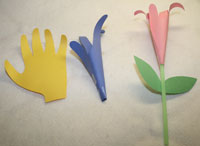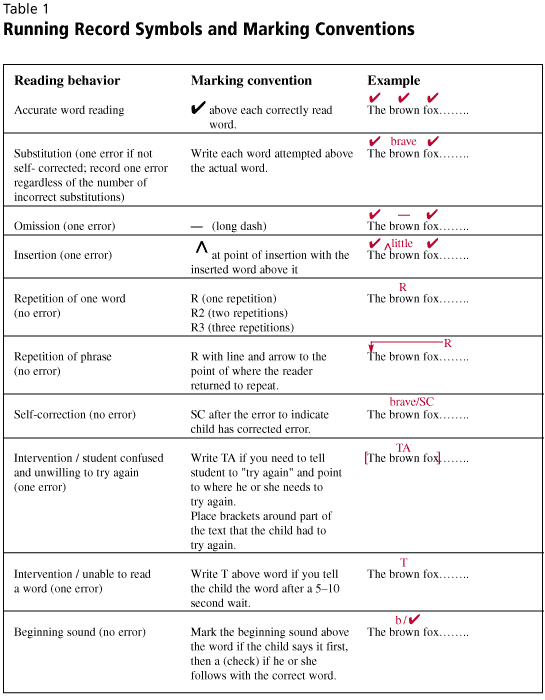Khamis, Mac 31, 2011
Ahad, Mac 27, 2011
Word Recognition Worksheets
| Source : http://www.kidslearningstation.com/phonics/word-recognition/ The section below is full of worksheets dedicate to some different themes. Just click on any of the worksheet images below view and print your copy of the worksheet. | |||
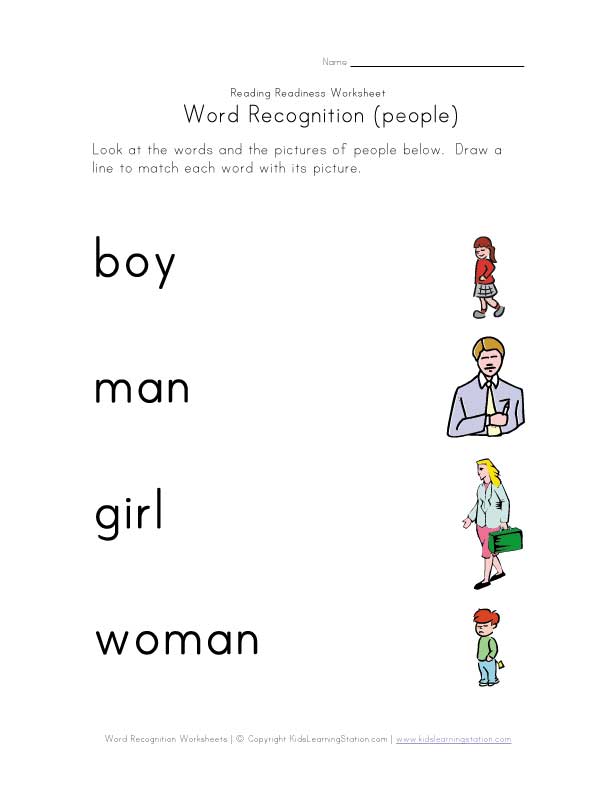 People Word Recognition People Word Recognition | 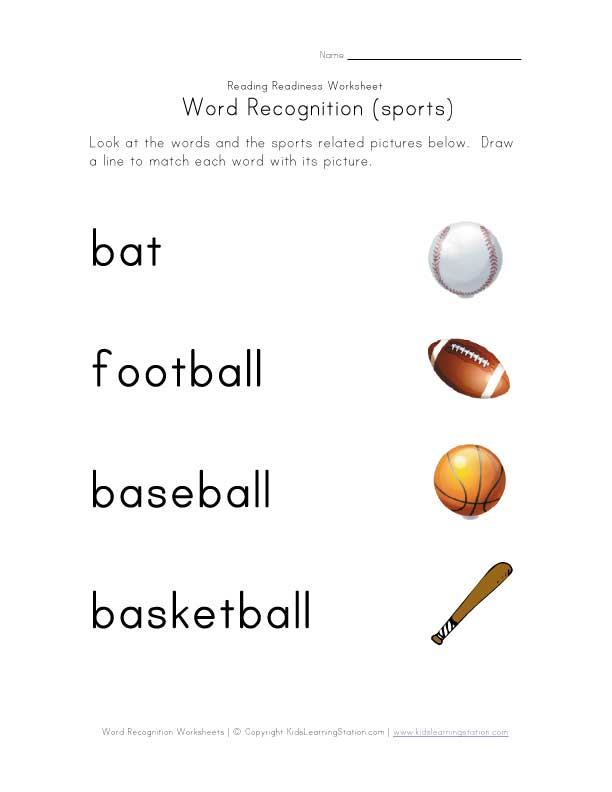 Sports Word Recognition Sports Word Recognition | 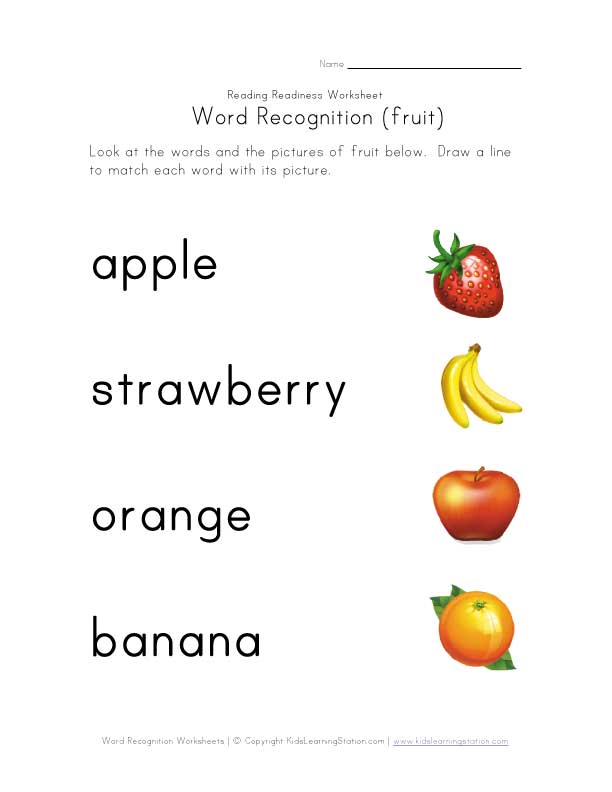 Fruit Word Recognition Fruit Word Recognition | 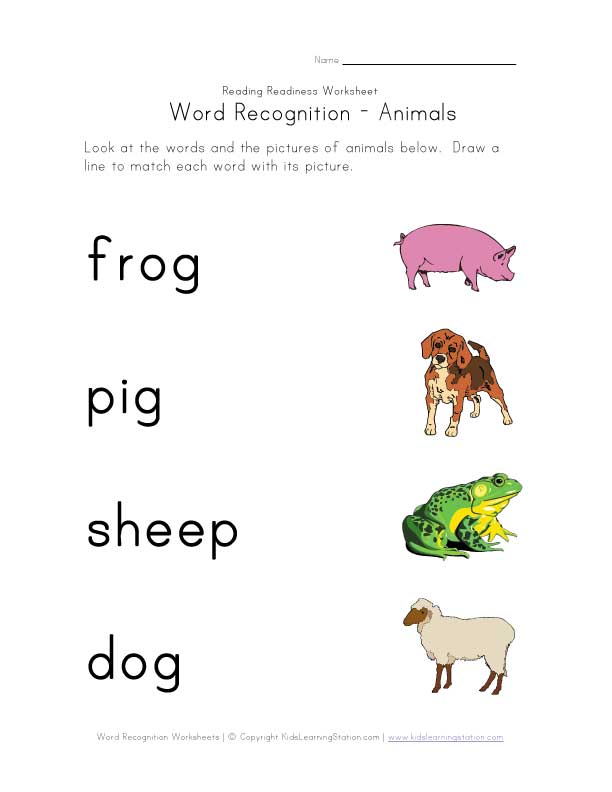 Animal Word Recognition Animal Word Recognition |
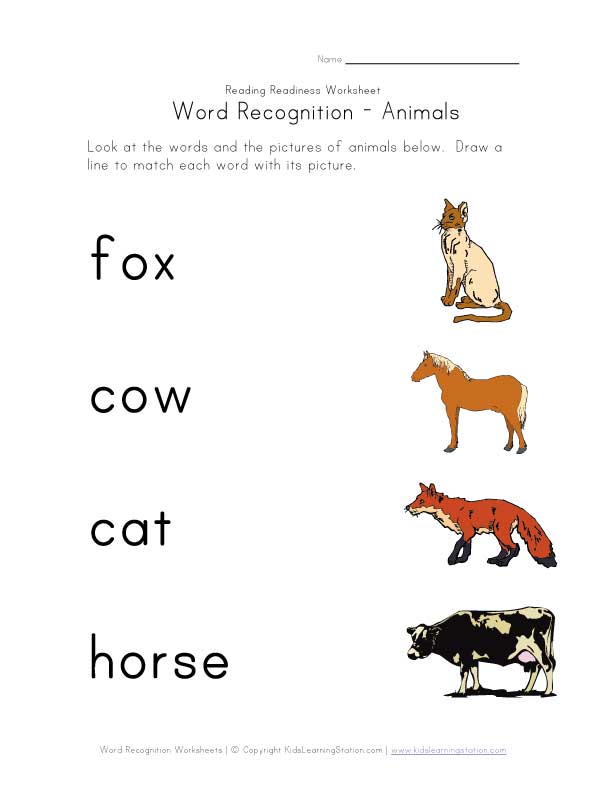 Recognize Animal Names Recognize Animal Names | 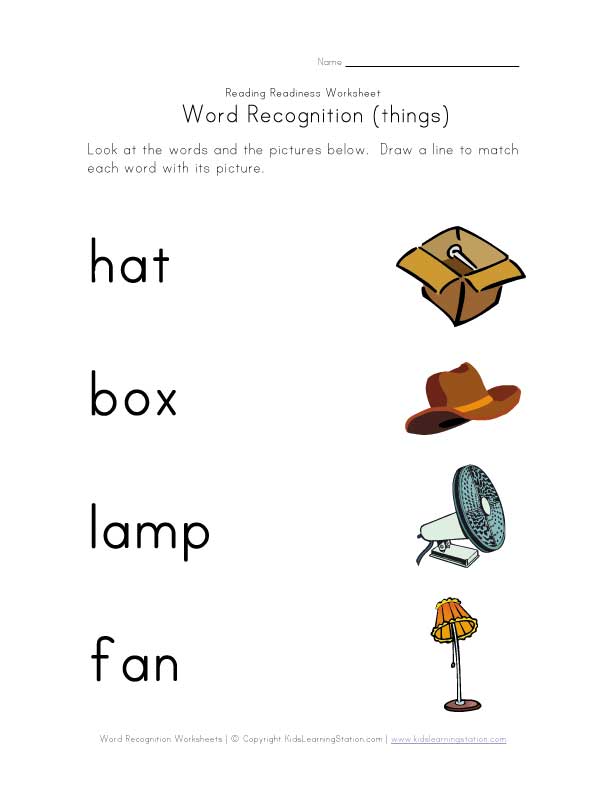 Word Recognition Worksheet Word Recognition Worksheet | 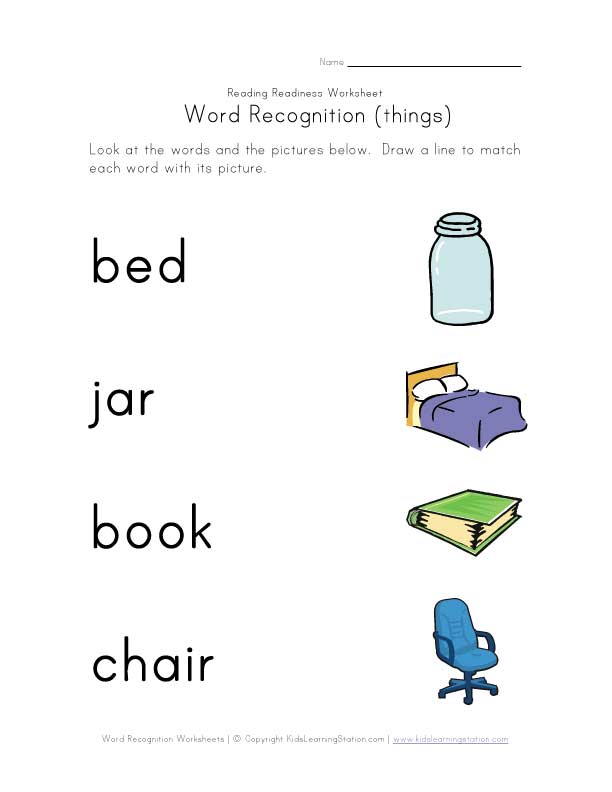 Recognize Words Worksheet Recognize Words Worksheet | 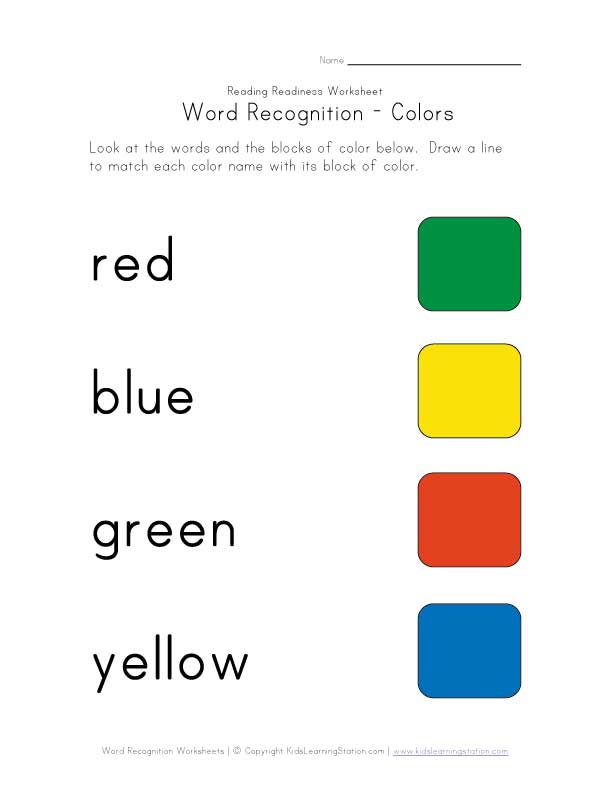 Colors Word Recognition Colors Word Recognition |
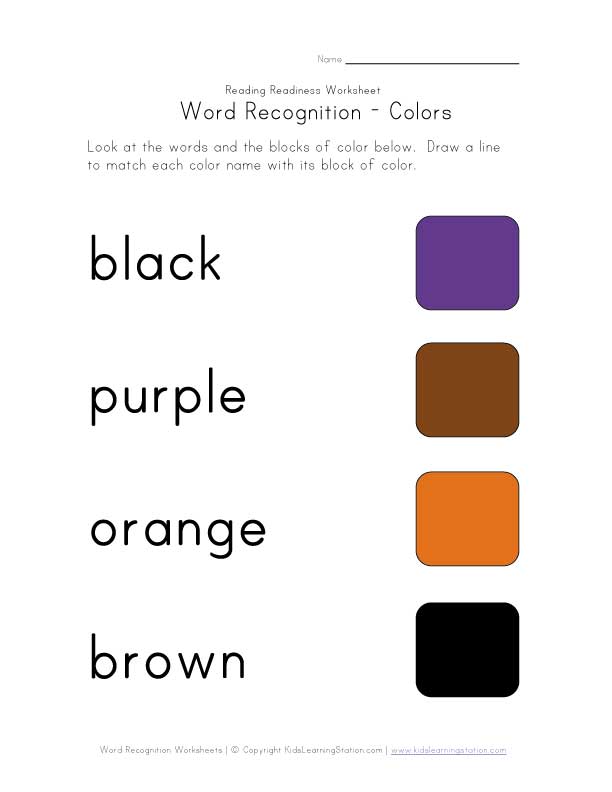 Recognize Color Names Recognize Color Names | 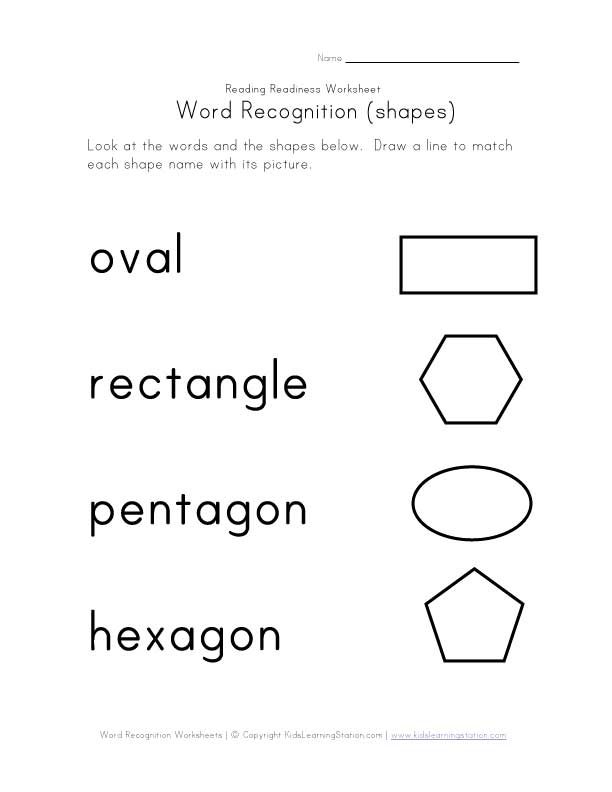 Recognize Shape Names Recognize Shape Names | 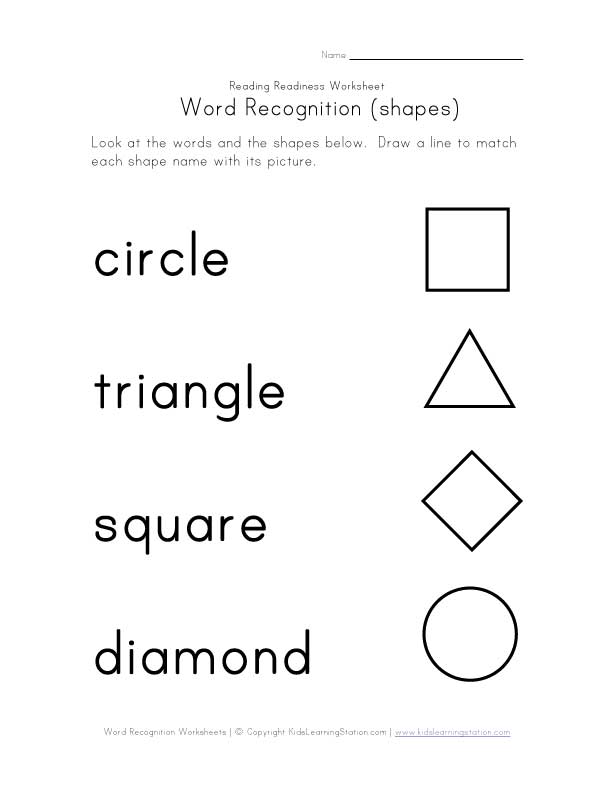 Shapes Word Recognition Shapes Word Recognition | 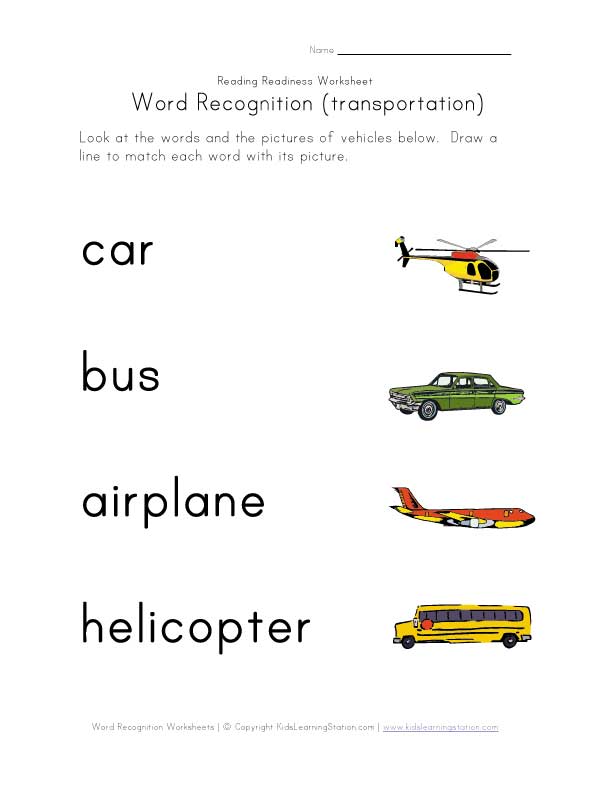 Vehicles Word Recognition Vehicles Word Recognition |
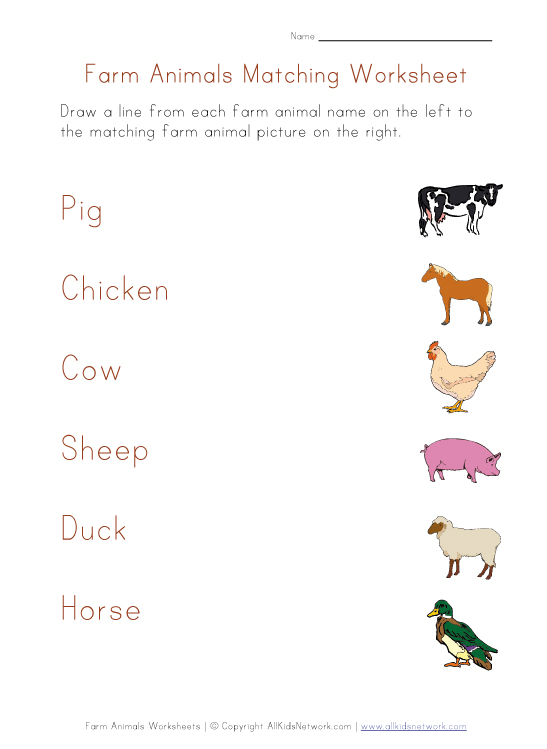 Farm Animals Word Recognition Farm Animals Word Recognition | 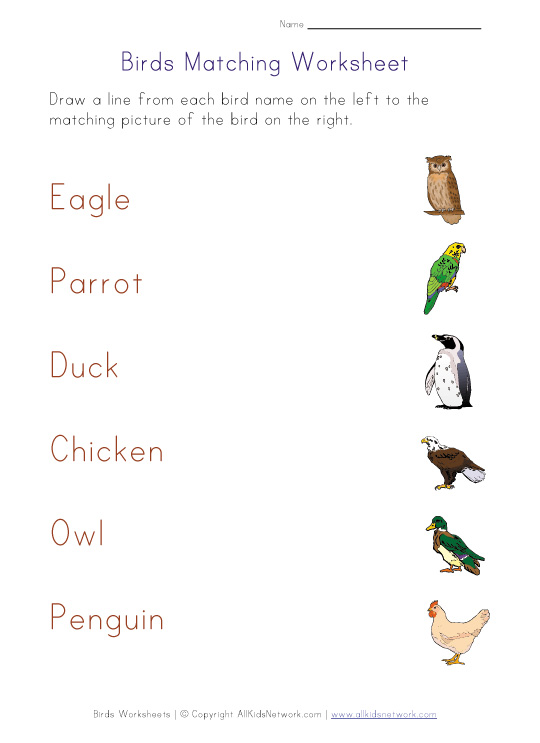 Birds Word Recognition Birds Word Recognition | 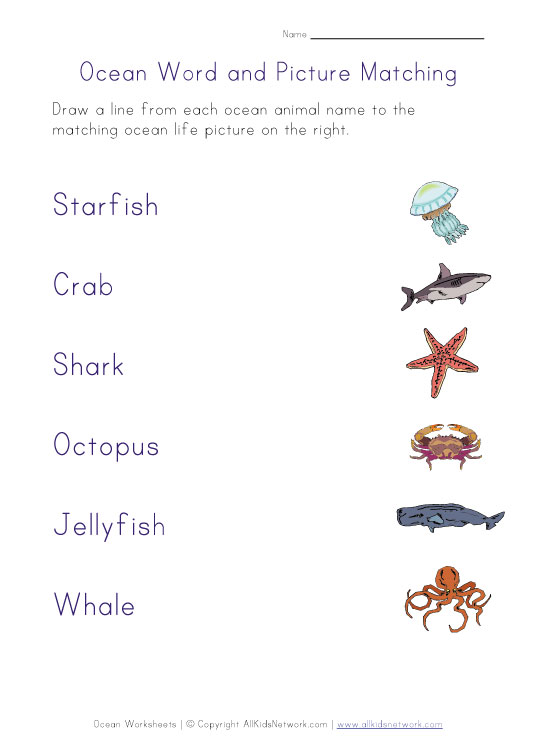 Ocean Animals Word Recognition Ocean Animals Word Recognition | 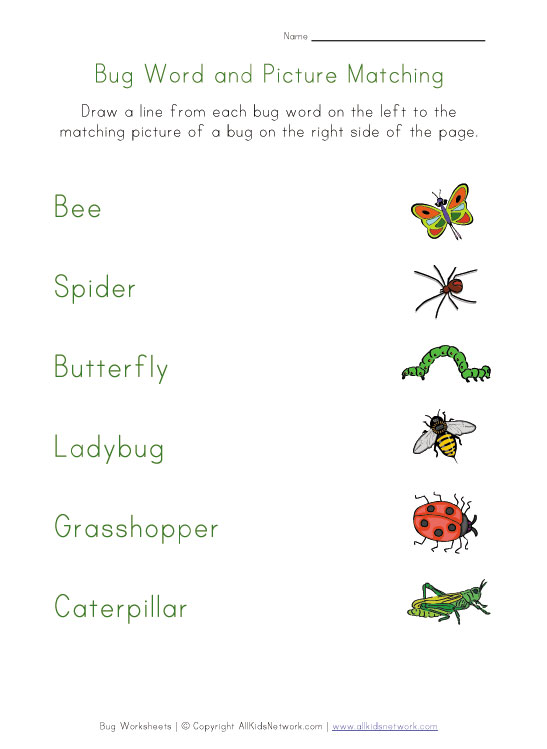 |
Handprint Flowers Mother's Day Gift
|  The stages of the handprint flower craft |
Sabtu, Mac 26, 2011
Alphabet Book
You'll need:
~ Red construction paper apple
~ White rectangle piece of construction paper
~ Black inkpad
~ Green construction paper leaves
To Make:
1. Have your child cut out the apple if they are able to use scissors {we cut them out ahead of time due to limited time}.
2. Let your child rip the apple in half, horizontally.
3. Rip the white piece of paper on both sides, so the apple 'core' appears to be eaten.
4. Have your child stamp their fingerprint on the white 'core' of the apple to make seeds.
Art
I can't take credit for this too-cute alligator Aa. No Time for Flash Cards has directions for the craft. We used foam sheets that I picked up at the Dollar Tree along with construction paper teeth and googly eyes. Super fun and a cute take home for the kids to remember the letter we studied!
Math
Apples were the primary focus of the week, so during our circle times we had several different activities we used to focus on different math skills.
Sequencing
I printed off a page of different sized apples from File Folder Fun and cut them out and the kids took turns putting them in order from smallest to largest.
Apple Tree felt board ~ How does an apple grow? I have a cute little apple tree that we used on the floor to show how apples grow. We put flower blossoms on the tree first and then they 'grew' into big and little apples. We picked the apples off the tree and sorted them by big and little and counted to see which one we had more of.
Cuisenaire Rods ~ We used cuisenaire rods to build the letter Aa. First we used the big rods and then tried using the little ones. We also made an apple tree, airplane and an alligator with the rods {this is something I did with Zachary, not the class!}. :)
Science
The biggest hit of the day revolved around taste-testing apples. I brought in three different colors of apples and sliced them up. Everybody took a bite of each apple slice and then we talked about how the apples tasted {sweet, sour, tangy, etc...}, the different colors of the apples, and everyone voted on their favorite tasting apple and we graphed the results.
Golden Delicious was the winner by ONE vote...why those kiddos liked the Granny Smith is beyond me....
Songs and Rhymes
During our circle time we did several songs and games together. After reading through The Lady with the Alligator Purse, I sang the song to them while 'reading' the book again {I love that book!}.
Apple Tree {song and game}
We passed around a little apple {like playing Hot Potato} while singing the song below and whoever was left holding the apple got tickled!
Will your apples fall on me?
I won't cry, I won't shout,
If your apples knock me out!
Jumaat, Mac 11, 2011
Weave a Strawberry Basket

A tisket, a tasket; want to weave a basket? Using an old strawberry basket, show your child how to make a pretty basket with a handle—a great way to celebrate Little Red Riding Hood. Weaving ribbons through the holes is good for hand-eye coordination and patience. She can use pastels to make this into a darling Easter or spring-themed basket, or simply track down ribbons in her favorite colors.
What You Need:
- A plastic strawberry basket
- Thin ribbon (such as gift wrap ribbon) in pretty colors
- A pipe cleaner
- Beads
What You Do:
- Have your child thread the ribbons through the holes in the basket. There’s no need to tie them. It’s painstaking work, but great practice in developing fine motor skills.
- Invite her to string the beads on the pipe cleaner, leaving at least an inch free at each end.
- Twist the pipe cleaner into a curved handle with the beads at the top.
- Loop one end of the pipe cleaner through one side of the basket and twist closed.
- Have her repeat the same techniques on the other side.
Khamis, Mac 10, 2011
Running Record
A running record allows you to assess a student's reading performance as she/he reads from a benchmark book. Benchmark books are books selected for running record assessment purposes. A running record form, with text from the book printed on the form, accompanies each of the benchmark books. Only the first 100 -150 words of the longer benchmark books are used for the upper level running records. A blank running record form is supplied for teachers who wish to perform running records on books other than the benchmark books or for additional text from the upper level benchmark books.
There are conflicting views on whether students should be assessed using a book they have never read versus using a book they are familiar with. We believe using a book that has not been previously read will give a more accurate measure of a student's ability to handle text at the assessed level. For this reason, we provide two benchmark books at each level: one fiction and one non-fiction. You can always opt to read the book before doing a running record if you prefer using previously-read text for your running record.
After completing a running record, you may want to assess a student's comprehension of the book read. Reading A-Z provides Retelling Rubrics for this purpose. Both fiction and non-fiction Retelling Rubrics are provided.
Taking a Running Record
Running records are taken most often at the earlier stages of reading. Students who are not progressing at the expected rate should be assessed even more frequently than the schedule suggested below.
- Early Emergent readers (Levels aa – C): every 2 to 4 weeks
- Emergent readers (Levels D – J): every 4 to 6 weeks
- Early fluent readers (Levels K – P): every 6 to 8 weeks
- Fluent readers (Levels Q – Z): every 8 to 10 weeks
Taking a running record takes practice. Before attempting a running record, read the procedural steps below, then go to the section on Marking a Running Record Form.
- Select a book that approximates the student's reading level. Explain that she/he will read out loud as you observe and record her/his reading skills.
- With the running record form in hand, sit next to the student so that you can see the text and the student's finger and eye movements as she/he reads the text.
- As the student reads, mark each work on the running record form by using the appropriate Running Record Symbols and Marking Conventions shown below. Place a checkmark above each work that is read correctly.
- If the student reads incorrectly, record above the word what the student reads.
- If the student is reading too fast for you to record the running record, ask her/him to pause until you catch up.
- Be sure to pay attention to the reader's behavior. Is the student using meaning (M), structural (S), and visual (V) cues to read words and gather meaning?
- Intervene as little as possible while the student is reading.
- If the student is stuck and unable to continue, wait 5 to 10 seconds, then tell her/him the word. If the student seems confused, provide an explanation to clear up the confusion and say, "Try again."
Marking a Running Record Form
Several terms are used when marking a running record form. You should become familiar with these terms by reviewing the explanations below.
- Errors (E)--Errors are tallied during the reading whenever a child does any of the following:
--Substitutes another word for a word in the text
--Omits a word
--Inserts a word
--Has to be told a word
- Self-correction (SC)--Self-correction occurs when a child realizes her or his error and corrects it. When a child makes a self-correction, the previous substitution is not scored as an error.
- Meaning (M)--Meaning is part of the cueing system in which the child takes her or his cue to make sense of text by thinking about the story background, information from pictures, or the meaning of a sentence. These cues assist in the reading of a word or phrase.
- Structure (S)--Structure refers to the structure of language and is often referred to as syntax. Implicit knowledge of structure helps the reader know if what she or he reads sounds correct.
- Visual (V)--Visual information is related to the look of the letters in a word and the word itself. A reader uses visual information when she or he studies the beginning sound, word length, familiar word chunks, and so forth.
There are two steps to marking a running record. Step 1 involves marking the text on the running record form as the student reads from the benchmark book. Before taking your first running record, become familiar with the symbols used to mark a running record form. These symbols are found in Table 1. Also review the Sample Running Record to see how a completed form looks. It also is a good idea to take a few practice running records by role-playing with a fellow teacher as she/he plays the role of a developing reader, intentionally making errors for you to record.
Once the student has read all the text on the running record form and you have recorded their reading behavior, you can complete Step 2. In Step 2 you fill in the boxes to the right of the lines of text you have marked. Begin by looking at any error the student has made in the first line. Mark the number of errors made in the first box to the right of the line. If the student self corrected any of these errors, mark the number of self-corrections in the second box to the right of the line. Next determine whether the errors and self-corrections were made as a result of meaning, structure, or visual cueing. For a description of each of these cues, review the explanations provided above. Write MSV in each box for each error and a self-correction made and circle the appropriate letter for the cue used by the student.
After completing step two you should total the number of errors and self-corrections and write each total in the box at the bottom of the appropriate column. Next calculate the student's error rate, accuracy rate, and self-correction rate, found in the next section Scoring and Analyzing a Running Record.
You do not have to mark the MSV cueing portion of the running record form. It is simply used to help you further analyze a student's reading behavior and provide deeper insight into a student's possible reading deficiencies. You can still use the information on error, self-correction, and accuracy rates to place the student at the developmentally appropriate instructional level.
Scoring and Analyzing a Running Record
Scoring: The information gathered while doing a running record is used to determine error, accuracy, and self-correction rates. Directions for calculating these rates are given below. The calculated rates, along with qualitative information and the student's comprehension of the text, are used to determine the student's reading level.
Qualitative Analysis: The qualitative analysis is based on observations that you make during the running record. It involves observing how the student uses the meaning (M), structural (S), and visual (V) cues to help her/him read. It also involves paying attention to fluency, intonation, and phrasing. Think back to the prompts you offered and how the student responded. These observations help you form a picture of the student's reading development.
Error
Accuracy
Self-Correction
The formulas below were used with the sample running record above.
Error Rate
Error rate is expressed as a ratio and is calculated by using the following formula:
Total words / Total errors = Error rate
Example:
99 / 8 = 12.38, or 12 rounded to nearest whole number
The ratio is expressed as 1:12.
This means that for each error made, the student read approximately 12 words correctly.
Accuracy Rate
Accuracy rate is expressed as a percentage. You can calculate the accuracy rate using the following formula:
(Total words read – Total errors) / Total words read x 100 = Accuracy rate
Example:
(99 – 8) / 99 x 100 = Accuracy rate
91/99 x 100 = Accuracy rate
.919 x 100 = 91.9%, or 92% rounded to the nearest whole number
You can use accuracy rate to determine whether the text read is easy enough for independent reading, appropriate to use without frustration during reading instruction purposes instruction, or too difficult for the reader. The breakdown of these three categories is as follows:
Easy enough for independent reading = 95 – 100%
Instructional level for use in leveled reading session = 90 – 94%
Too difficult and will frustrate the reader = 89% and below
Self-Correction Rate
Self-correction rate is expressed as a ratio and is calculated by using the following formula:
(Number of errors + Number of self corrections) / Number of self corrections = Self-correction rate
Example:
(8 + 3) / 3 = Self-correction rate
11 / 3 = 3.666, or 4 rounded to the nearest whole number
The self-correction rate is expressed as 1:4. This means that the student corrects approximately 1 out of every 4 errors.
If a student is self-correcting at a rate of 1:4 or less, this indicates that she/he is self-monitoring her/his reading.
-
Bahasa Melayu Mendengar cerita Mendengar puisi Mendengar perbualan Mendengar perbualan Bersoaljawab mengenai puisi dan cerita Me...
-
Hanya RM10 sahaja untuk kesemua file ini untuk dimuat turun. Hubungi : fauziah.arahim@gmail.com


























